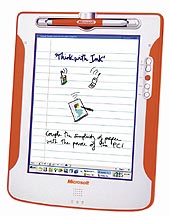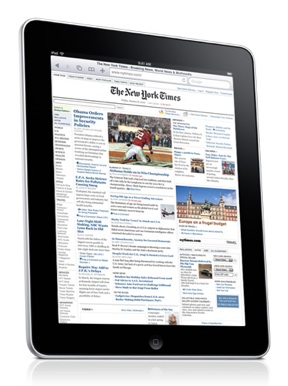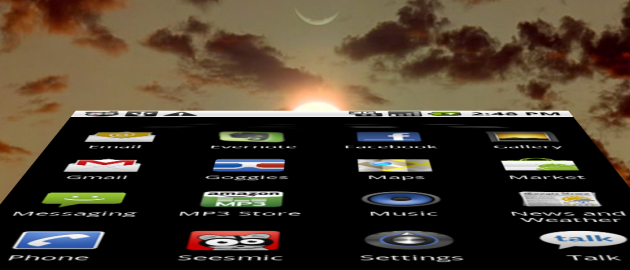Over the past few years, the growth of mobile platforms has emerged as the most innovative and exciting technology trend in some time. Before the launch of the iPhone, Microsoft was suffering through the tepid launch of Windows Vista, and Apple had released its fifth iteration of Mac OS X since 2001. To put it simply: Desktop operating systems had gotten boring. There was little in the way of innovation on top of them. And attempts at extending these desktop systems to new devices, like Windows-based tablet computers or the Apple TV, never found widespread success.
Now we’re in the midst of a smartphone revolution, the benefits of which are extending far beyond our phones. Mobile platforms are invading our lives on multiple fronts — from couch-friendly tablets to media-room set-top boxes and beyond. So how did we get to this point? And what does it mean for the future?
This Innovation Series is brought to you by Lexus. As always, VentureBeat is adamant about maintaining editorial objectivity. Lexus had no involvement in the content of this or other posts.
Mobile makes tablets viable (finally)
Microsoft was a big proponent of tablet computers since 2000, when Bill Gates unveiled prototype tablet device at the Comdex tradeshow in Las Vegas. (How symbolic that Comdex itself is defunct.) Microsoft’s interest in the field can be traced back to Windows for Pen Computing, an add-on for Windows 3.11 and 95 that halfheartedly enabled stylus input, a key part of the first wave of tablet computing in the 1990s. At that point, the term pen computing applied to both tablet-like devices, as well as PDAs like the PalmPilot and Apple’s own failed Newton platform.

In the 1990s, tablet devices were limited by weak processing power and immature operating systems. Come the early 2000s, as laptops began to get more powerful and portable, it seemed to Microsoft, as well as most industry observers, that the timing was ripe for another stab at the tablet market. The company released Windows XP Tablet Edition in 2002. It was similar to Windows for Pen Computing in that it was basically tablet-specific software slapped on top of Windows. This time around though, Microsoft lined up hardware vendors to build tablet devices for the OS, which included the likes of Compaq, Sony, and Acer.
But despite Microsoft’s enthusiasm for its tablets, which it positioned as the evolution of laptops, the platform never really found much success outside of a few niche markets. Part of the problem was that Microsoft’s handwriting recognition software took years to become truly refined, which turned many people off to stylus input on tablets. The bigger issue was that most of the devices weren’t actually dedicated tablets — they were laptop-tablet hybrids with swiveling screens. That dual-focus design relegated tablet functionality as secondary to traditional computing. It also didn’t help that the tablets were built on top of an existing desktop platform, which made much of the tablet functionality seem forced and unnatural.
 With the iPad, Apple managed to avoid many of Microsoft’s tablet pitfalls precisely because it was built on top of a mobile platform, the iPhone operating system (now called iOS). Since it functions like a large version of the iPhone and iPod Touch, many users already know how to interact with it. There’s no confusion about it being a standard computer or a tablet, even with the keyboard accessory. That it’s a touchscreen device — like all of the newer smartphone platforms — is also significant: It means users no longer have to deal with a stylus and wonky handwriting recognition, and it allows for more natural interaction with the device.
With the iPad, Apple managed to avoid many of Microsoft’s tablet pitfalls precisely because it was built on top of a mobile platform, the iPhone operating system (now called iOS). Since it functions like a large version of the iPhone and iPod Touch, many users already know how to interact with it. There’s no confusion about it being a standard computer or a tablet, even with the keyboard accessory. That it’s a touchscreen device — like all of the newer smartphone platforms — is also significant: It means users no longer have to deal with a stylus and wonky handwriting recognition, and it allows for more natural interaction with the device.
This latest generation of tablet devices also have the benefit of improved mobile hardware. Apple’s A4 chip, which drives the iPad and iPhone 4, is a powerhouse compared to the laptop processors from the early 2000s. Android tablet-makers will have powerful hardware choices of their own in the form of nVidia’s Tegra 2 processor, and Intel’s revamped Atom line. Battery life, screen technology, and solid-state storage options (which have no moving parts, and thus draw less power) have also evolved since Microsoft’s attempt at tablets. All components have come down in price — especially components used in the high-volume mobile market.
In short, we’re in the midst of a perfect storm of hardware innovation and mobile-platform proliferation.
Mobile makes the leap to your TV
Now mobile platforms are beginning to break out of handheld devices. Google TV, the search giant’s bold attempt at bringing Web content to your television, is powered by Google’s Android mobile operating system, originally developed for smartphones. And while the current-generation Apple TV’s fate is still uncertain, there is word that the company is planning a $99 version of the device that runs iOS, and will focus on streaming media content.
While Google TV is a clear upgrade to long-stagnant TV programming-guide technology from cable and satellite providers, it’s also a successor to the failed WebTV platform (later MSN TV) from the mid-’90s — which aimed to bring the internet to consumer’s televisions. Once again, Microsoft jumped on the bandwagon too early. It bought the company behind WebTV in 1997, at a time when dial-up speeds and low-resolution televisions greatly hampered Web browsing. In 2001, Microsoft rebranded the service as MSN TV. In that year, it also unveiled a broadband offering of the service together with Roger’s Cable in Canada which let users browse the Web, shop, read email, and chat on their televisions.
In many ways, it was very similar to Google TV. But Google will be able to take advantage of more than just static Web content — it integrates Web content with the programming guide TV watchers are used to. Google TV also benefits from the widespread adoption of HDTVs, which will allow users to view Web pages with a resolution comparable to computers, compared to the blurry low-resolution text on WebTV. And since it’s based on Android, consumers will be able to download apps and create their own custom Google TV experience as well.
WebTV’s biggest problem was timing — just like Microsoft’s Tablet PC attempt. Once computers dropped in price, and broadband access became readily available, the world had no need for WebTV. It also existed in a time before Web video sites like YouTube and Hulu. There’s a reason Google is selling the ability to watch online video with Google TV, not the ability to sit on your couch and read Web pages.
Apple has had its own WebTV-like experience with the Apple TV. The company released the device in 2007 to help people view content purchased from the iTunes Store on their TVs. It was also useful for streaming music and video from iTunes libraries on computers as well. But it was expensive, and for some strange reason, Apple never really paid much attention to the device. Steve Jobs famously called it “a hobby”, which to many was a not-so-subtle jab at the product.
Apple’s problem was that it locked down the Apple TV from getting much of the great streaming content on the Web, including Hulu and Netflix. Fans of the device hacked it with services like Boxee to enable more functionality, but that was far from a mainstream solution. If rumors of the new Apple TV pan out, we can expect the device’s workings to resemble the iPad’s. It won’t be completely open to Web video since it will run iOS (and subsequently lack Adobe’s Flash software, currently prevalent on video sites), but users will be able to access media via apps like Netflix’s and ABC’s.
For both Google TV and the new Apple TV, their mobile operating systems will allow them to run on small and low-powered devices. Google TV could potentially be embedded in televisions, and the new Apple TV may be as small as an iPhone, according to various sources. Both also gain the benefit of an app marketplace, which will allow users to customize their viewing experience.
It wasn’t a necessity that Google TV run Android, but it made sense given the variety of hardware that powers it, and the fact that it’s easy to program for. Similarly, Apple would benefit more from building on top of the iPhone’s app ecosystem than tapping the legacy of the Mac.
Why mobile will succeed where desktop platforms failed
It’s not that difficult to see the appeal of mobile platforms today: They have small footprints so they can be installed on devices without much storage. They can run on hardware that is portable, powerful, and in most cases much cheaper than desktop counterparts. They’re also easy to develop for and have thousands of apps already available.
In comparison, modern desktop operating systems require significant amounts of storage just to be installed, are built for faster CPUs, and are also notoriously difficult to adapt for devices outside of laptops and desktops. In many cases, particularly when it comes to smaller devices and set-top boxes, desktop platforms are also overkill. Instead of stuffing devices full of software they will never need, manufacturers are better off using a nimble mobile OS to fine tune their functionality.
Mobile platforms today also aren’t as defined by the way we used desktop PCs. Microsoft’s Windows Mobile platform, for example, attempted to replicate Windows-like functions on smartphones and PDAs. It was subsequently trounced by RIM’s BlackBerry platform, which was dedicated to mobile email. Touchscreen smartphone platforms have also quickly surpassed Windows Mobile in market share, and their success pushed Microsoft to develop a radical mobile platform of its own with Windows Phone 7.
Looking ahead
We’ll be seeing mobile platforms in far more than just tablets and television set-top boxes. Car manufacturers are looking into using Google’s Android on car dashboards, and Apple could embed iOS in practically anything. Mobile platforms are beginning to take the place of embedded Linux systems, which used to be the go-to choice for slapping a basic operating system on your device. Instead of fiddling with a custom Linux installation, manufacturers can adopt Android to program their devices more easily. In this regard, Android has the advantage over iOS, because Apple would likely never license its operating system to third parties.
We’re going to see a war between Android, iOS, and other mobile operating systems on unexpected battlefields. But today’s emerging players aren’t the only potential challengers. HP is in the process of buying Palm, with the hopes of taking its WebOS far beyond smartphones to printers and other consumer devices. BlackBerry maker Research In Motion has promised a new version of its aging mobile OS. Now imagine a BlackBerry PC designed to give on-the-go office workers fast access to email and corporate documents, without the legacy of a Windows PC.
The point is that mobile operating systems, while originally designed for phones, have the best shot at spreading everywhere there’s a computer processor and a screen. And clever entrepreneurs will be exploiting the resulting innovations for a long time to come.


